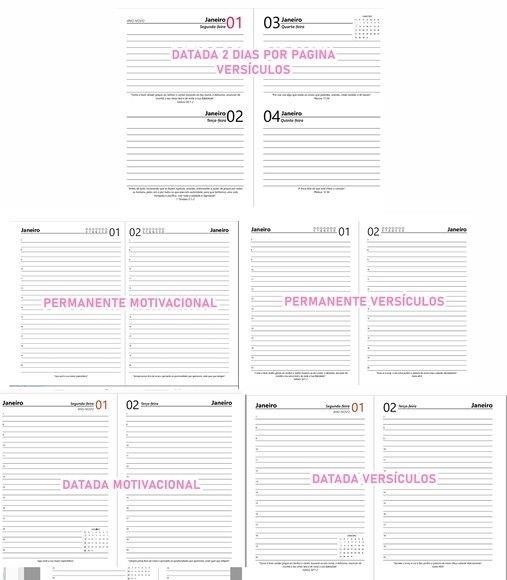yanmar parts catalog pdf
Yanmar Parts Catalog PDF⁚ A Comprehensive Guide
This guide explores accessing Yanmar parts catalogs, both official and third-party․ Learn to identify your engine model, understand catalog navigation, locate specific parts, interpret diagrams and part numbers, and troubleshoot part identification issues․ Using genuine Yanmar parts ensures optimal engine performance and longevity․
Finding Yanmar Parts Catalogs Online
The digital age offers convenient access to Yanmar parts catalogs, eliminating the need for cumbersome physical copies․ Numerous online resources provide access to these crucial documents․ Yanmar’s official website is a primary source, often offering downloadable PDF versions of their parts catalogs, categorized by engine model and series․ These official catalogs ensure accuracy and up-to-date information․ However, navigating the website might require some familiarity with Yanmar’s organizational structure․ Remember to carefully verify the model number of your Yanmar engine before downloading to guarantee compatibility․
Beyond the official website, several third-party websites specialize in providing access to Yanmar parts catalogs․ Some may offer free downloads, while others might charge a fee for access or require registration․ Always exercise caution when using third-party sources, ensuring the site’s legitimacy and security to protect your data․ Cross-referencing information from multiple sources can be beneficial when searching for specific parts or verifying part numbers, but always prioritize official Yanmar resources for the most reliable information․
Accessing Yanmar’s Official Website for Downloads
Yanmar’s official website is the most reliable source for obtaining genuine parts catalogs in PDF format․ The website’s structure may vary, but generally, a “Support,” “Downloads,” or “Parts” section will lead you to the catalog resources․ Navigation often involves selecting your specific product category (marine, agricultural, industrial, etc․), followed by the engine model number․ This precise identification is crucial; using an incorrect model number will result in accessing the wrong catalog․ Once the correct model is selected, you’ll likely find options to download the catalog as a PDF file, often requiring registration or login for access․
The official website may also offer other valuable resources beyond the parts catalog itself, such as service manuals, maintenance guides, and troubleshooting tips․ Take advantage of these supplementary documents for a comprehensive understanding of your Yanmar engine․ Remember to check the website regularly for updates, as Yanmar periodically releases revised catalog versions․ Downloading directly from the official source ensures you obtain the latest and most accurate information, avoiding potential discrepancies found in third-party copies․
Utilizing Third-Party Online Resources
While Yanmar’s official website is the preferred source, several third-party websites offer Yanmar parts catalogs․ Exercise caution when using these resources․ Verify the website’s legitimacy and ensure it’s a reputable source before downloading any documents․ Some websites might offer free downloads, while others may require payment․ Always check user reviews and ratings to gauge the reliability and accuracy of the provided catalogs․ Be aware that third-party catalogs may not always be up-to-date, potentially containing outdated part numbers or missing recent additions to the Yanmar product line․
Downloading from unofficial sources carries inherent risks․ Malicious software could be embedded within files, compromising your computer’s security․ Furthermore, the accuracy of the information provided is not guaranteed․ Using outdated or incorrect part numbers can lead to ordering the wrong parts, resulting in unnecessary expenses and delays in repairs․ If using a third-party resource, compare the information with the official Yanmar website whenever possible to ensure accuracy․ Prioritize the official website for the most reliable and secure access to Yanmar parts catalogs․ Always prioritize security and accuracy when sourcing your technical manuals․
Identifying Your Yanmar Engine Model Number
Accurately identifying your Yanmar engine’s model number is crucial for obtaining the correct parts catalog․ This number, usually a combination of letters and numbers, uniquely identifies your specific engine type and ensures you access the appropriate parts list․ The model number is typically found on a data plate affixed to the engine itself․ This plate usually contains other vital information, such as the engine’s serial number and manufacturing date․ The location of the data plate varies slightly depending on the engine model and may be situated on the side, top, or front of the engine block․ Examine the engine closely; the data plate is often clearly visible, although sometimes it might be hidden by dirt or grime․
If the data plate is difficult to locate or the information is illegible, refer to your engine’s documentation․ Your owner’s manual or service manual should contain the model number․ If you cannot find the data plate or relevant documents, consider contacting your local Yanmar dealer or service provider․ They possess the expertise to accurately identify your engine model based on physical inspection or other identifying characteristics․ Providing them with as much detail as possible, such as engine size and application, will aid in quicker and more accurate identification․ Obtaining the correct model number is vital for acquiring the correct parts catalog and ensuring the smooth functioning of your engine․
Importance of Using Genuine Yanmar Parts
Employing genuine Yanmar parts is paramount for maintaining your engine’s performance, reliability, and longevity․ These parts are manufactured to exacting standards, ensuring optimal fit, function, and durability․ Using counterfeit or inferior parts can lead to decreased engine efficiency, premature wear, and even catastrophic engine failure․ Yanmar’s rigorous quality control processes guarantee that their parts meet or exceed the specifications required for your specific engine model․ This commitment to quality directly translates into enhanced engine performance, reduced downtime, and a longer lifespan for your equipment․
Conversely, non-genuine parts may not meet these exacting standards․ They might be manufactured using inferior materials or have inconsistent dimensions, potentially leading to improper installation and reduced performance․ The use of such parts can void your engine’s warranty and expose you to significant repair costs in the long run․ Furthermore, the use of substandard parts can compromise the safety and reliability of your equipment, particularly in critical applications․ Investing in genuine Yanmar parts, while potentially having a higher upfront cost, represents a sound investment in the long-term performance, reliability, and safety of your Yanmar engine․ The peace of mind derived from knowing your engine is operating with optimal parts significantly outweighs any perceived short-term cost savings․
Understanding Parts Catalog Structure and Navigation
Yanmar parts catalogs, whether in PDF or online formats, are meticulously organized to facilitate efficient part identification․ Typically, these catalogs employ a systematic structure, often categorized by engine model and sub-assemblies․ Each section is further broken down into detailed diagrams and component listings․ Understanding this hierarchical structure is key to navigating the catalog effectively․ Look for an index or table of contents to quickly locate the relevant section for your specific engine model․ Once you’ve identified your engine’s model number (crucial information!), locate the corresponding section within the catalog․ This section will typically include exploded diagrams showing each component’s position within the engine assembly․ These diagrams are accompanied by part numbers and descriptions, enabling accurate part identification․ Some catalogs may also incorporate search functions, allowing you to locate parts using keywords or part numbers․ Mastering the catalog’s navigation will save you valuable time and effort when ordering replacement parts․
Pay close attention to any accompanying legends or notes within the diagrams․ These often provide additional context, specifications, or relevant information about particular parts; For example, you might find information on part revisions or alternatives․ If you encounter any difficulties navigating the catalog, don’t hesitate to utilize the contact information provided by Yanmar or your local authorized dealer․ Their expertise can prove invaluable in locating the specific parts you need, ensuring a smooth and efficient repair process․
Locating Specific Parts Within the Catalog
Once you’ve familiarized yourself with the Yanmar parts catalog’s structure, pinpointing specific components becomes straightforward․ Begin by confirming your engine’s model number and locating the corresponding section․ Yanmar catalogs usually present exploded diagrams, visually representing the engine’s assembly․ These diagrams are invaluable for identifying a part’s location and its relationship to other components․ Each part within the diagram is assigned a unique part number, which is crucial for ordering․ This number is typically displayed near the component in the diagram, along with a brief description․ If you know the part’s name or function, use the catalog’s index or search function (if available) to quickly locate it․ Many online catalogs offer search capabilities, allowing you to search by keywords, part numbers, or even descriptions․
Should you only have a visual reference of the part, carefully compare its appearance to the images within the exploded diagrams․ Pay attention to shape, size, and any distinguishing features․ If uncertainty remains, utilize any available magnification tools within the PDF viewer or online catalog․ Remember, accuracy is paramount․ Ordering an incorrect part can lead to delays and further complications․ If you’re still unable to locate a specific part after thorough searching, contact Yanmar directly or consult with an authorized dealer for assistance․ They possess the expertise and resources to help you identify the correct component, ensuring a successful repair or maintenance project․
Interpreting Diagrams and Part Numbers
Yanmar parts catalogs utilize detailed exploded diagrams to visually represent the assembly of engine components․ These diagrams are not merely illustrations; they are essential tools for part identification and ordering․ Each component within the diagram is assigned a unique alphanumeric part number․ This number serves as the definitive identifier for that specific part, regardless of its visual representation․ Understanding how to read these diagrams is crucial․ They often use color-coding or shading to group related parts or highlight specific areas of the engine․ The numbering system is usually sequential or logical, following a specific pattern for each assembly․ Pay close attention to the diagram’s legend or key, as this will explain any symbols, abbreviations, or color-coding used․
When interpreting part numbers, note that they are usually structured with a prefix indicating the part’s category or type, followed by a unique identifier․ The catalog may provide a comprehensive parts list alongside the diagrams, cross-referencing part numbers with descriptions and quantities․ This list aids in creating an accurate parts list for ordering․ If the diagram shows multiple views of the same component (e․g․, from different angles), take note of any variations or specific details shown in each view․ Always double-check the part number against the description and image to ensure you’re ordering the correct component․ If any ambiguity remains, consulting with a Yanmar dealer or service provider can clarify uncertainties and prevent errors․
Troubleshooting and Part Identification
Effective troubleshooting often begins with accurately identifying the malfunctioning part․ Yanmar parts catalogs are invaluable resources in this process․ Start by carefully examining the engine’s symptoms․ Note any unusual noises, leaks, performance issues, or warning lights․ This initial assessment helps narrow down the potential problem areas․ Once you have a general idea of the affected system (e․g․, fuel system, cooling system, lubrication system), refer to the relevant section of the parts catalog․
The catalog’s exploded diagrams provide a visual guide to the components within that system․ Compare the diagram to your engine, noting any visible damage or discrepancies․ Pay close attention to details such as wear and tear, cracks, corrosion, or missing parts․ Cross-reference the visual inspection with the catalog’s part descriptions and numbers․ If a part appears damaged or suspect, carefully record its part number․ Use this number to order a replacement part․ If the problem is not immediately apparent, consult the catalog’s troubleshooting sections, if available․ These sections may offer diagnostic guides, flowcharts, or solutions to common problems․ Remember, using genuine Yanmar parts is crucial for reliable repairs․ Using inferior substitutes can lead to further damage and costly repairs down the line․
Utilizing Dealers and Service Providers for Assistance
While Yanmar parts catalogs are comprehensive resources, navigating them and identifying the correct parts can sometimes prove challenging․ In such instances, leveraging the expertise of authorized Yanmar dealers and service providers is highly recommended․ These professionals possess in-depth knowledge of Yanmar engines and their components․ They can assist in accurately identifying parts based on your engine model and the specific problem you are experiencing․ This is particularly helpful when dealing with complex assemblies or intricate parts diagrams․ Dealers can access detailed technical information and diagrams not always readily available in the standard parts catalogs․
Furthermore, they can provide valuable insights into part compatibility, ensuring you select the correct components for your engine․ Authorized dealers also offer genuine Yanmar parts, guaranteeing quality and reliability․ This minimizes the risk of using substandard parts that could compromise engine performance or longevity; Beyond part identification, dealers and service providers can offer additional support, including troubleshooting assistance, repair services, and maintenance advice․ They can provide guidance on proper installation procedures, ensuring the parts are fitted correctly and the engine operates optimally․ Contacting a dealer is particularly beneficial if you encounter issues interpreting the parts catalog or if you require assistance with more complex repair tasks․


